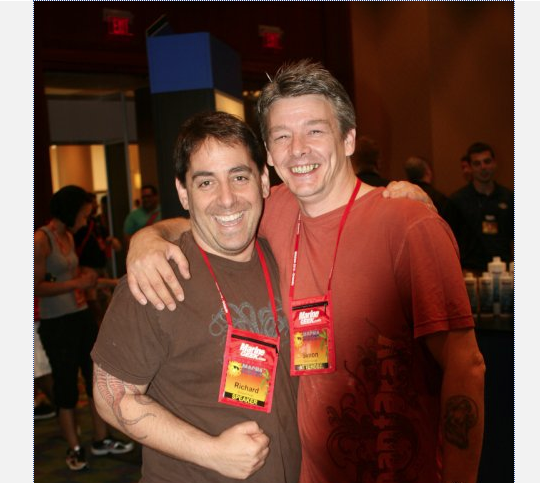From Reefbuilders
Reefbuilderss has asked contributors to recount their MACNA 2010 experience – its my turn, so here goes! My MACNA 2010 really started when I arrived at the hotel at 11:55 pm on Thursday night. I expected to go to the room, go over my talk and get some much needed sleep (the day had started out at 5 am and involved sitting on an alligator, but that is a different story). When I got to the hotel, I was pulled over to a large group of reefers before I even got to check in. Then I got pulled to the hotel bar where there was an even larger group of reefers. When I finally got to my room at 3:30 am, I knew this MACNA was going to be great and as I drifted off to sleep I dreamed of friends, the Saturday night Manhattan Reefs’ party, and the fabulous reef related info that was going to be coming my way over the next few days. There was a lot to get to, and I didn’t have time to get to everything or everyone I wanted to, but here is a smattering of my highlights of the show.
Probably the biggest excitement for me was the in-person updates on the PNG SEASMART program. I have been lucky enough to dive in the area where the program is taking place, and was excited when I first heard about it because the area is really chock full of diversity. At the same time I was worried because the program was using some of the same sounding green/local/sustainable rhetoric that seems to come with start-up collecting stations but that rarely pans out.
But it seems like PNG SEASMART is really making a go of being successful by sticking to its initial promises. Educate and train the locals in sustainable Total Allowable Catch limits and non destructive collection methods. Less volume, more value (to quote a recent meme). Local ownership and management. Involving PNG government in every aspect of the project so it can be built intelligently for the long term. Provide transparency and information to the hobbyist so everyone can see the reality of the project. The local PNG-ers at the show were fun, approachable and enthusiastic. David Vossler was eager to engage in conversation about how to do things better. They even invited anyone who wants to get over to PNG to come see what they are doing. The program isn’t perfect yet, but from what I have seen so far, PNG SEASMART has a real shot at getting it right.
The standout talk for me was FIJI: TEN YEARS AFTER THE CORAL APOCALYPSE, by Dr. Bruce Carlson. This talk chronicled several areas of reef in Fiji that were hit hard by the 1998 bleaching event. Video of 30 meter line transects year after year showing the damage to reefs by bleaching events and their astounding ability to recover in 10 years or so was really informative and inspiring. Not only video, but data! I love data! Data about how many coral species and what area they cover and how those ratios change over time after bleaching was some amazing work and great documentation (early in recovery there are more coral species with less overall coverage, later in the recovery there are fewer coral species with great overall coverage). Most interesting was seeing the damage that storms can do to these reefs. Seeing a thriving area of reef one year, and a desolate plain the next after a storm really drove home for me how dynamic natural reef systems are. The upshot of the talk is that reefs can recover from storms and bleaching events, but if these kinds of events occur too often, there could be real problems.
The Marine Breeders Initiative (MBI) held the first ever roundtable discussion about captive breeding and getting animals to market. The event was well attended, interesting and informative. While it wasn’t long enough to really get into the meat of the discussion, it was a wonderful was to set the stage for this kind of important, ongoing in person discussion – which is very different from the equally important continuing online discussion.
A highlight for me on a purely personal note was both the attendance and reaction to my talk on Cephalopods. It was well attended (something I was trepidatious about given the talks that were going on at the same time) which is very exciting to me – a hard core ceph fanatic. What got me through, was getting a completely unexpected round of applause for showing captive mating and a captive Flamboyant hatchling. I was honored to be speaking at MACNA in the first place, and even more humbled that people were excited about my recent work.
If you are luckily like me, you live in an area with a thriving reefing community. Local clubs bring people together, share ideas and get everyone involved going in a good direction. However, after a time, that direction can get a little unidirectional and we can forget that other approaches are really important, that perspectives different from our own, or our locality, have merit. Attending a MACNA with attendees from across the country and around can really give you a reality check and open your eyes to possibilities. MACNA 2010 had everything I could have wanted. Did I get to see everything and talk to everyone? No, but there’s always Des Moines next year.
Thanks to everyone involved in making the show happen, vendors, speakers, attendees, photo bombers, party hosts – especially the hosting club ORCA. I hope you are all lying around recovering bathed in the glow of a job well done and in the appreciation of the greater reef keeping community.

